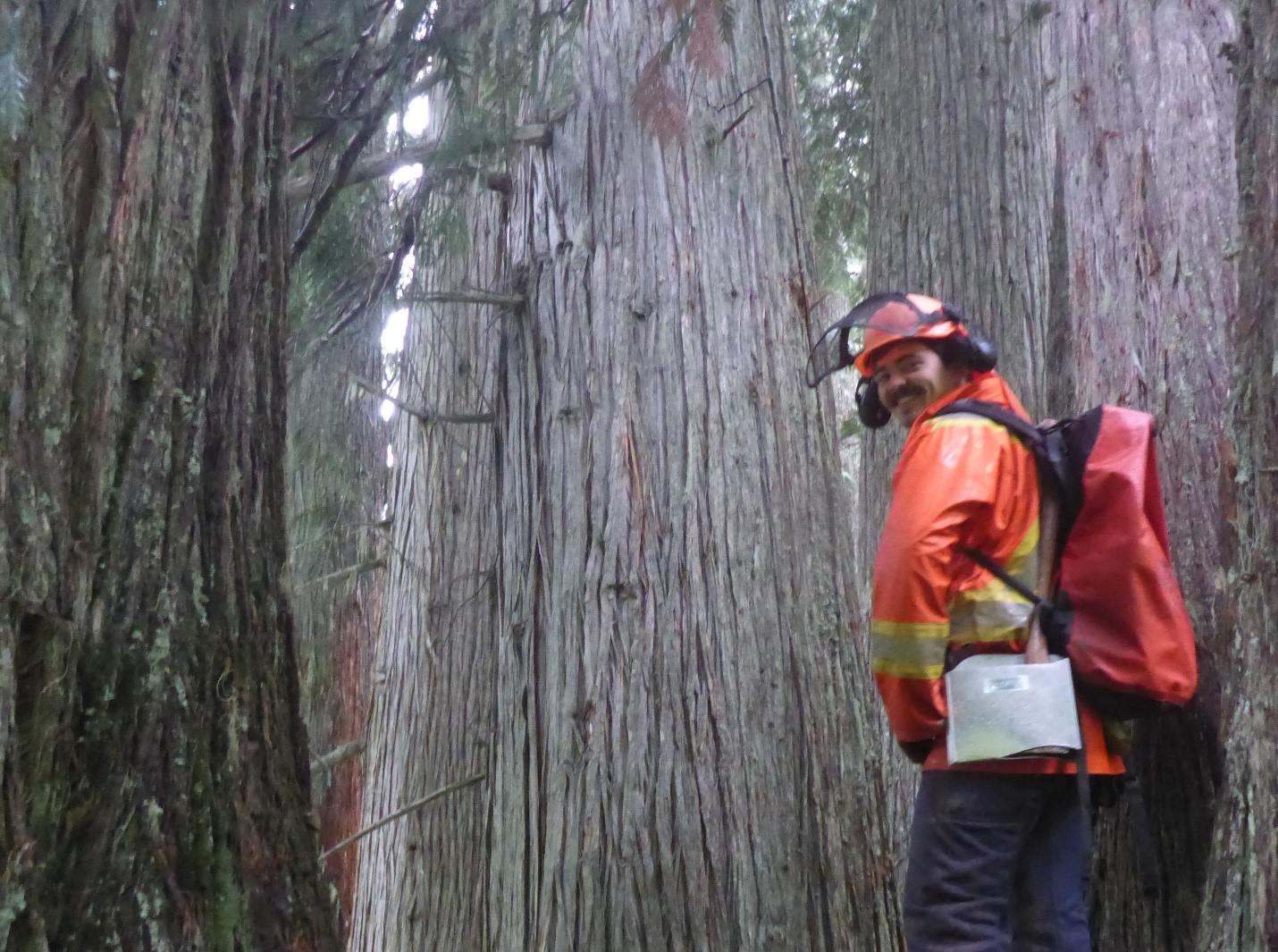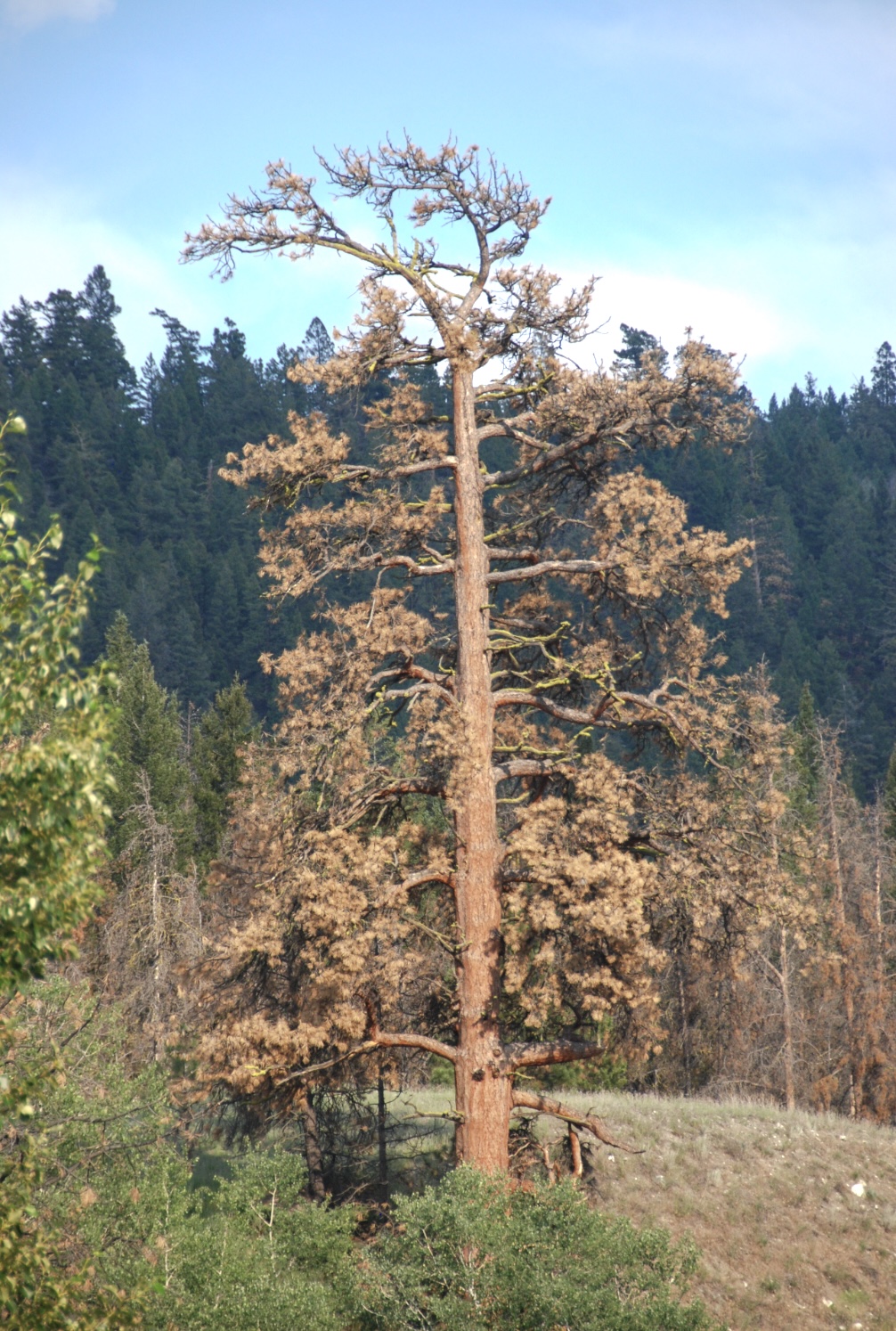 Beautiful British Columbia is world renowned for its incredible wilderness landscape, mountains, rivers, lakes and forests. It’s a great place to live, work and play.
Beautiful British Columbia is world renowned for its incredible wilderness landscape, mountains, rivers, lakes and forests. It’s a great place to live, work and play.
Our forests are regionally diverse – from coastal and interior rainforests, dry belt pine and fir forest and higher elevation spruce and balsam, old growth and new growth – they all have one thing in common … trees!
Whether working or playing, it is essential to be aware of a forest’s potential hazards and what can put you at risk, specifically as it relates to the trees.

What makes a tree hazardous?
A dangerous tree is any tree (regardless of its size) that is hazardous to people or facilities because of:
- It’s location or “lean”
- Physical damage
- Overhead hazards
- Deterioration of limbs, stems or root system
- A combination of the above
Truth be told, any tree has potential to be a hazard in certain circumstances. Weather, the environment and the condition of a tree can all render it a danger tree.
Answering the age-old question “If a tree falls in the forest, does anyone hear?” … only if someone is near enough to hear. The same applies to the danger it may pose. If no one is near it, then even if it falls, it isn’t a danger to anyone. Spend enough time in a forest and you will witness a tree fall over on its own. It’s a natural part of the forest’s cycle.
How do you determine if a tree is a hazard?
Use the Recognize, Evaluate, and Control method, commonly referred to as REC.
|
Recognize the Hazard |
From a distance, observe as much of the stand of trees as possible, focusing on any individual trees that show signs of defect. The more time spent exposed to a potential hazard tree, a more detailed assessment is required. Remember, not all dead trees are danger trees and not all green trees are safe trees. |
|
Evaluate the Situation/Hazard |
Perform a 360° assessment of the tree, looking for lean and defects to determine if it is a danger. Consider the effect weather and environment have on the tree and the time spent within its danger zone. Moving through the forest means very little time spent exposed to a danger tree, however the risk would go up if the wind was blowing or if a person remained stationary for a longer period in the danger zone. Are you walking by it or pitching your tent under it? |
|
Control the Hazard |
Determine the best ways to reduce the risk the danger trees pose. The best solution is elimination – either eliminate the hazards around you or remove yourself from around the hazards. A qualified person could fall the tree, use alternate falling methods, or create a defined no-work zone around the tree that keeps people out of the danger zone of the hazard. |
For recreational users enjoying the forest, be situationally aware by keeping your head up and looking around. Pay attention to weather conditions and how they may affect the area. Hiking or walking is considered a low-risk activity when the time spent exposed to any single danger tree is minimal but the risk increases with temperature changes, rain, wind and snow, or if the stand has a high number of danger trees due to root rot, bug kill or recent fire damage.
 Always keep in mind the risk goes up with extended exposure so when you stop in a forested area, take a moment to look around and spot any trees that can strike you if they fall over. Walk around them and look for defects or signs of weakness. If you identify any danger trees, relocate to a different area so you are no longer in the strike zone – at minimum 1.5 tree lengths away from the potential hazard.
Always keep in mind the risk goes up with extended exposure so when you stop in a forested area, take a moment to look around and spot any trees that can strike you if they fall over. Walk around them and look for defects or signs of weakness. If you identify any danger trees, relocate to a different area so you are no longer in the strike zone – at minimum 1.5 tree lengths away from the potential hazard.
In my humble opinion, working in the forest is arguably the best! Fresh air, incredible sights, sounds and … trees! Before forestry work begins, the Worker’s Compensation Act and Occupational Health & Safety Regulation require that a qualified person perform a site hazard assessment. The REC process should be applied to any identified hazards and information communicated to all workers prior to work commencing. In a forest environment, this includes a tree assessment to determine if any trees affecting the work area are danger trees.
Appropriate controls must be applied to reduce the risk danger trees pose to workers and, where feasible, the danger tree must be felled. Fallers need to have an appropriate plan that prioritizes the removal of an identified danger tree into an open area as soon as it is safe to do so. To overcome a falling difficulty, the plan can include using Qualified Assistance. If the tree is unsafe to fall, then alternate falling methods may be used.
What if the danger tree can’t be felled?
There may be several reasons a danger tree cannot be felled. One of the most important, is not having a qualified person available to fall the tree. A faller may assess the tree and determine whether an adequate opening is present, if the tree is controllable, or if there is an appropriate escape route. If any of these are questionable then the tree can be deemed unsafe to fall. In these instances, the only course of action is to create a defined no-work zone around the danger tree to keep workers out of the danger zone of the tree. A no-work zone has to be physically marked, typically with yellow no-work zone ribbon to mark the danger zone boundary. The size and shape of the no-work zone depends on the size and lean of the hazard, the terrain the hazard is located on, weather conditions and the surrounding timber. The hazard and no-work zone need to be documented, marked on the map and shared with any workers who may be affected by the danger tree hazard.
Who can assess trees and decide if they are safe or dangerous?
The Wildlife Danger Tree Assessor course (WDTAC) provides valuable instruction on assessing dangerous trees and evaluating wildlife habitat value in forestry, (non-urban) parks and wildland fire situations. The course is recognized as the current “standard of care” (the best available and accepted standards and practices) in BC by the Ministry of Forests, Ministry of Environment and WorkSafeBC, and includes three modules:
- Parks and Recreation Sites
- Wildland Fire Safety
- Forest Activities (e.g., harvesting, silviculture, resource roads, oil & gas)
BC forests are a vital resource and provide amazing benefits to us all. From providing renewable fibre, climate health, wildlife ecologies and a place for us to work and play, it is essential for all of us to see the forest for the trees as every tree should be appreciated and respected for what it is and the story it has to tell. If you’re in the forest, look for the story, as it may just save your life.
Additional resources:
Online Training: Introduction to Dangerous Trees on Forestry Worksites
Dangerous Tree Blasting for Certified Fallers
University of Northern British Columbia: Wildlife Danger Tree Assessor Certificate Program